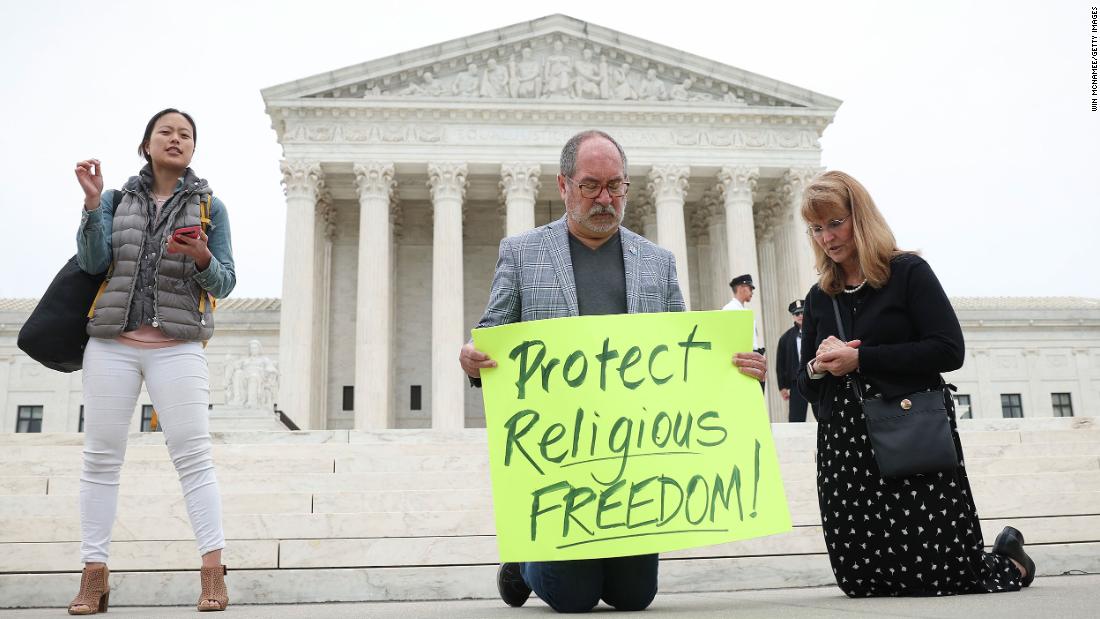The 6-3 ruling against a Washington state school district that suspended coach Joseph Kennedy reinforces a modern court pattern favoring religious conservatives and a greater mingling of church and state.
Monday’s ruling threatens a series of decisions back to 1962 that have forbidden official-sponsored school prayer. The ruling also comes less than a week after the same 6-3 ideologically split court declared that states subsidizing private education must include religious schools.
In both cases, the majority put an emphasis on the First Amendment’s “free exercise” guarantee and minimized its prohibition on government “establishment of religion.”
The court majority brushed aside the Bremerton School District’s assertion that letting Kennedy pray on the 50-yard line would lead observers to think the district had impermissibly endorsed religion or exposed student athletes to coercion.
The court outright discarded a traditional “endorsement” test and simultaneously downplayed the possibility of student coercion.
The broadly worded decision is certain to invite more challenges by religious adherents and will likely increase displays of religion in schools and other public places.
“Respect for religious expressions is indispensable to life in a free and diverse Republic — whether those expressions take place in a sanctuary or on a field, and whether they manifest through the spoken word or a bowed head,” Gorsuch wrote. “Here, a government entity sought to punish an individual for engaging in a brief, quiet, personal religious observance doubly protected by the Free Exercise and Free Speech Clauses of the First Amendment.”
The chasm between the right and left sides of this court on religious cases has only deepened since 2020, when Justice Amy Coney Barrett succeeded the late liberal Justice Ruth Bader Ginsburg.
As Roberts rejected the state’s practice of excluding religious schools from a funding program, he had similarly emphasized the free exercise interests over those establishment concerns.
“The State pays tuition for certain students at private schools — so long as the schools are not religious. That is discrimination against religion,” he wrote. “A State’s antiestablishment interest does not justify enactments that exclude some members of the community from an otherwise generally available public benefit because of their religious exercise.”
Separately, the court has increasingly permitted employer exemptions based on religion from the Affordable Care Act’s contraceptive mandate and allowed Christian prayer before legislative meetings of local governments.
Monday’s decision in Kennedy v. Bremerton School District takes another leap in that direction, enhancing religious exercise.
Gorsuch said the football coach was acting as a private person, not a school employee, when he prayed after the game. More significantly for future cases, the Gorsuch majority said judges should eschew any inquiry into whether a government may be impermissibly endorsing religion.
Instead, he said, judges should look to “historical practices” and focus on the original meaning of the Constitution’s establishment clause.
Dissenting justices countered that the majority’s approach undermines the separation of church and state. They said prayer led by any school official “strikes at the core of our constitutional protections for the religious liberty of students and their parents.” With liberal Justice Sonia Sotomayor taking the lead, dissenters said the majority had misconstrued the facts of the case and failed to appreciate how much students might alter their behavior to win a coach’s approval, for example, for more time on the field or letters of recommendation.
To illustrate that Kennedy’s behavior was far from quiet and solitary, they included in their opinion photos of Kennedy surrounded by kneeling players.
The dissent, joined by liberal Justices Stephen Breyer and Elena Kagan, argued that the majority ruling would dilute religious liberty protections and decades of precedent forbidding school-sponsored prayer.
Now, they concluded, the court was charting “a different path,” one that favored religious exercise.
“This decision does a disservice to schools and the young citizens they serve,” Sotomayor declared, “as well as to our Nation’s longstanding commitment to the separation of church and state.”

